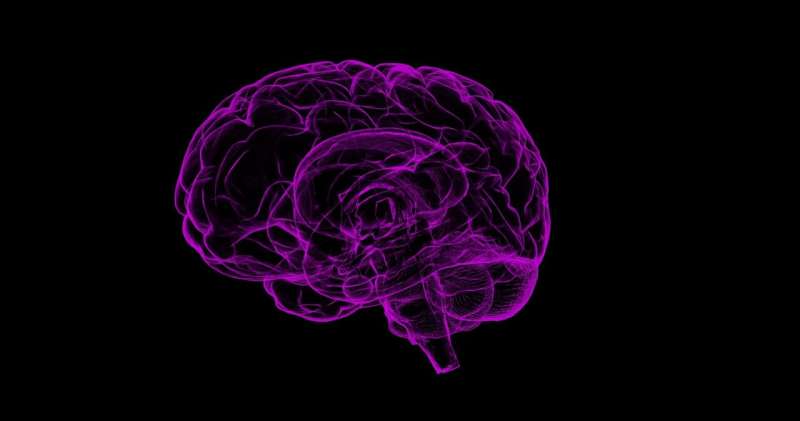Alcohol byproduct contributes to brain chemistry changes in specific brain regions

Triggers in everyday life, such as running into a former drinking buddy, walking by a once-familiar bar, or attending a holiday gathering can cause people recovering from alcohol use disorder to relapse. A common chemical called acetate that is produced when the liver breaks down alcohol may contribute to this phenomenon, a team including Mount Sinai researchers has now found.
The National Institute on Drug Abuse defines addiction as a chronic, relapsing disease and estimates that between 40 to 60 percent of people who have gone through treatment for alcohol addiction will experience relapse. Researchers have sought to understand what drives the biology behind these incessant cravings and how medical science can help people overcome triggers paired to their addictions.
The team, led by researchers from the Perelman School of Medicine at the University of Pennsylvania and the Icahn School of Medicine at Mount Sinai, showed, in a mouse model, how acetate travels to the brain's memory system to govern how neuronal genes are expressed and, ultimately, how the mice behave when they are presented environmental cues to consume alcohol. This study, which appears this week in Nature, was led by Shelley Berger, Ph.D., Daniel S. Och University Professor and Director of the Penn Epigenetics Program, and first authors Philipp Mews, Ph.D., a former graduate student in the Berger lab who is now a postdoctoral fellow at The Friedman Brain Institute at the Icahn School of Medicine at Mount Sinai in New York, and Gabor Egervari, Ph.D., a postdoctoral fellow in the Berger lab.
"It was a huge surprise to us that metabolized alcohol is directly used by the body to add chemicals called acetyl groups to the proteins that package DNA, called histones," said Dr. Berger, senior author of the study. "To our knowledge, this data provides the first empirical evidence indicating that a portion of acetate derived from alcohol metabolism directly influences epigenetic regulation in the brain."
In the nucleus of brain cells, genetic material is tightly wrapped around histone proteins to form a complex called chromatin. Histone proteins can be modified by acetyl groups (a process called histone acetylation), leading to the opening of the chromatin structure at specific spots of the genome in neurons and thus, making genes involved in memory formation available to be "read" and eventually, for their encoded proteins to be made.
"Our team in the Berger lab had previously discovered that ACSS2 'fuels' a whole new machinery of gene expression 'on-site' in the nucleus of brain cells to turn on key memory genes after learning," said Dr. Mews of the work that was published in a 2017 Nature paper. "We learned then that the metabolic factor ACSS2 is needed to lay down new memories."
In the current study, the research team used isotopically labeled alcohol and advanced mass spectrometry to track where the alcohol and its breakdown products go in the body and brain, and found that alcohol metabolism rapidly impacts histone acetylation in the hippocampus—the learning and memory center of the brain—by directly depositing alcohol-derived acetyl groups onto histones via an enzyme called acetyl-CoA sythetase 2 (ACSS2). This represents an entirely new route by which alcohol affects the brain and contributes to histone acetylation in neurons via the ACSS2 enzyme, which plays an important role not only for gene expression but also in alcohol-related learning.
To better understand how the alcohol-induced changes in gene expression ultimately affect behavior, mice were exposed to neutral and alcohol rewards in distinct compartments of their living environment, distinguished by environmental cues. After this "conditioning" period, the researchers measured their preference by allowing the mice free access to either compartment, then recording the time spent in the chamber that offered alcohol. They found that mice with normal ACSS2 activity in their brains spent more time in the alcohol compartment. When they reduced the protein level of ACSS2 in the brain, preference for the alcohol compartment was not favored over the neutral compartment.
"The data indicates to us that that alcohol-related memory formation requires ACSS2," said Dr. Egervari.
"This is significant because in alcohol use disorders, memory of alcohol-associated cues is a primary driver of craving and relapse, even after prolonged periods of abstinence," said Dr. Mews. "Our findings establish a direct link between alcohol metabolism and histone acetylation in the hippocampus, indicating that translational treatment strategies that target this metabolic-epigenetic nexus may pave the way for novel therapeutic interventions for alcohol use and other neuropsychiatric disorders."
In another arm of the study, the team found that in pregnant mice, the alcohol-labeled acetyl groups were incorporated into the brain cells of developing mice in utero. The fetal brains showed that "binge drinking-like" exposure—parallel to maternal labeling of neuronal histone acetylation—resulted in alcohol-derived acetate being deposited onto histones in fetal fore- and mid-brain areas during early neuronal development in the mice. This showed an unanticipated potential mechanism for how fetal alcohol spectrum disorders work and could have implications for combating fetal alcohol syndrome.
More information: Alcohol metabolism contributes to brain histone acetylation, Nature (2019). DOI: 10.1038/s41586-019-1700-7 , nature.com/articles/s41586-019-1700-7


















